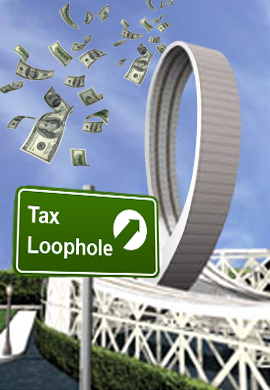
Every tax system, no matter how complex or well intentioned, contains unusual rules that create opportunities few people ever notice. While most taxpayers focus on common deductions and credits, history is filled with strange, unexpected, and sometimes brilliantly creative strategies that took advantage of gaps in the tax code. These oddities highlight how resourceful people can be when navigating tax law and how quickly legislation evolves once these strategies come to light.
One of the most famous examples involved racehorses. For years, certain taxpayers classified horses used for racing and breeding as property eligible for highly accelerated depreciation. By shifting horses into a classification meant for equipment, owners could dramatically increase deductions in the first few years of ownership. The strategy generated substantial tax savings for high income individuals who had the resources to participate in the industry. Once this became widely known, regulators tightened definitions and adjusted depreciation rules, yet it remains a textbook example of how creative asset classification can drive tax planning.
Another strange loophole appeared when taxpayers discovered that certain musical instruments could qualify as medical deductions. The logic was grounded in the tax code itself. If a doctor recommended playing a musical instrument as therapy to correct a medical condition such as an overbite or a respiratory issue, the cost of the instrument could be deducted as a necessary medical expense. Families with children undergoing orthodontic treatment sometimes used clarinets or similar instruments as part of their therapy, and the IRS allowed the deduction as long as it was supported by proper documentation. It is an illustration of how specific medical guidance can transform an ordinary purchase into a tax advantaged one.
Pets have also been central characters in unusual tax strategies. Although personal pets do not qualify for deductions, working animals sometimes do. For example, cats used to control vermin in a business setting have been deemed a legitimate deductible expense in certain rulings. Guard dogs used to protect business property may qualify as well, provided the breed and training are appropriate for security work and records support the expense. These cases are far from common, but they demonstrate how the line between personal and business use can blur in unexpected ways.
One of the stranger planning techniques involved alpacas. For years, alpaca farming benefited from generous livestock deductions, depreciation allowances, and agricultural incentives. The tax advantages, combined with promises of high future fiber prices, led to a surge of small investors purchasing alpacas primarily for tax purposes rather than genuine farming operations. While the strategy was technically legal, regulators and courts became increasingly skeptical of operations that lacked a true business purpose. The episode serves as a reminder that tax planning must be anchored in economic reality to withstand scrutiny.
Homeownership has produced its share of odd opportunities as well. Before certain rules were tightened, homeowners could take advantage of what became known as the bowling alley loophole. By converting a portion of their residence into a business facility, such as a home bowling alley used for paid lessons or events, taxpayers could depreciate a portion of the home and deduct related expenses. The IRS eventually restricted the breadth of allowable home business deductions, but the concept lives on in stories about creative taxpayers testing the boundaries of what constitutes a qualified business space.
Even gambling has generated unusual tax scenarios. Some professional gamblers have successfully argued that their gambling constitutes a trade or business. This classification allows them to deduct ordinary and necessary business expenses, something unavailable to recreational gamblers. While this status is difficult to maintain and requires significant documentation, it reflects how behavior and intent influence tax treatment in unexpected ways.
These strange strategies and loopholes highlight the evolving nature of tax law. As soon as a creative approach gains traction, lawmakers or regulators often respond by tightening rules, issuing guidance, or closing gaps. Yet they also underscore an important truth. The tax code is filled with nuance, and sometimes the most unusual opportunities are perfectly legitimate when used responsibly and supported by proper records.
While the average taxpayer is unlikely to deduct racehorses, alpacas, or clarinets, learning about these unusual strategies brings attention to the value of proactive and informed tax planning. The more familiar individuals become with how tax rules work, the more empowered they are to use legitimate opportunities and avoid missteps. In a system defined by complexity, even the strangest stories can offer practical lessons about staying curious, remaining compliant, and taking advantage of the benefits the law allows.
***
Eric S. Degen, CPA Titan Accountancy, LLC
discover the advantages of excellence
